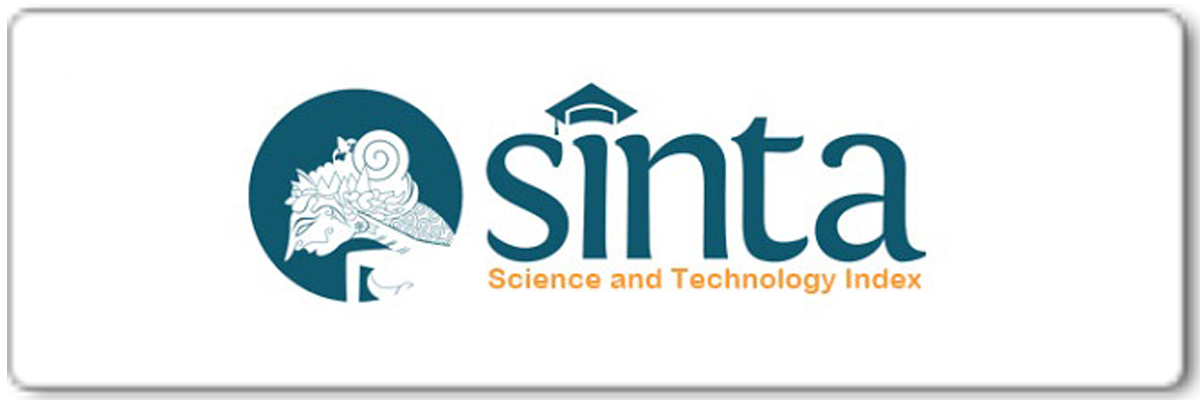The effect of zimmer twins as digital storytelling on students’ writing narrative text
Abstract
The objective of the research to compare of Zimmer twins website tool as digital storytelling than use nondigital in writing text narrative on students writing ability at the eleventh grade of MA Yayasan Sirojul Islam Sukolilo 2018/2019 academic year. Zimmer twins media is an animated movie maker based on the website for the students to create their short stories in movies with many emotion, etc. The sample of this research the Eleventh of MA YASI those are XI- 1 class as the experimental class, and the X1-2 class as the control class consisted of 20 students. The method in this research was a quantitative method. In addition, the design used was quasi-experimental research, and the instrument used a test. The research was taken by using non-random sampling. Moreover, this research was conducted through the following procedures: giving pre-test, applying treatments and giving post-test. The data analyzed and processed by using the statistic data calculation of ANCOVA by SPSS 23 program. The significant was shown by the students post-test mean in experimental class is 76.55 and the mean post-test in control class is 70.55. The result of the statistical hypothesis testing found from p-value was 0.000. It is lower than the level significant of 0.05. If p-value ≤ from the level significant 0.05. It means that H1 was accepted and H0 was rejected. In conclusion, Zimmer twins media can be effective as media teaching to writing ability of narrative text at the eleventh-grade students of MA Yayasan Sirojul IslamSukolilo.
The objective of the research to compare of Zimmer twins website tool as digital storytelling than use nondigital in writing text narrative on students writing ability at the eleventh grade of MA Yayasan Sirojul Islam Sukolilo 2018/2019 academic year. Zimmer twins media is an animated movie maker based on the website for the students to create their short stories in movies with many emotion, etc. The sample of this research the Eleventh of MA YASI those are XI- 1 class as the experimental class, and the X1-2 class as the control class consisted of 20 students. The method in this research was a quantitative method. In addition, the design used was quasi-experimental research, and the instrument used a test. The research was taken by using non-random sampling. Moreover, this research was conducted through the following procedures: giving pre-test, applying treatments and giving post-test. The data analyzed and processed by using the statistic data calculation of ANCOVA by SPSS 23 program. The significant was shown by the students post-test mean in experimental class is 76.55 and the mean post-test in control class is 70.55. The result of the statistical hypothesis testing found from p-value was 0.000. It is lower than the level significant of 0.05. If p-value ≤ from the level significant 0.05. It means that H1 was accepted and H0 was rejected. In conclusion, Zimmer twins media can be effective as media teaching to writing ability of narrative text at the eleventh-grade students of MA Yayasan Sirojul IslamSukolilo.
Keywords
Full Text:
PDFReferences
Anderson, S., Bellow, A., & Byrne, R. (2015). A comprehensive introduction to using technology in all K-12 classrooms. The Super Book of Web Tools for Educators, 8-25.
Bozdogan, D. (2012). Content Analysis of ELT Students Digital Stories for oung learners. Research on Youth and Language, 2(6), 126-136.
Charles, C. M. (1995). Introduction to Educational Research (2 nd ed.). New York: Addison Wasley Longman .Inc.
Cheung, Y. L. (2016). Teaching Writing Chapter 12. In W. A. Renandya, & H. P. Widodo, English language Teaching Today: Buiding a Closer Link Between and Practice (pp. 1- 21). New York: NY: Springer International.
Jitpaisarnwattana, N. (2018). Fostering Learner Autonomy in Foreign Language Classroom : A Digital Storytelling Project. Journal of Foreign Language Education and Tecnology, 3(2).
Jitpaisarnwattana, N. (2018, December 29). Students Attitude toward the Use of Digital Storytelling in foreign Language Classroom : The Zimmer Twins Project. rEFLections, 25(2), 59 - 75.
Kemendikbud. (2014). Pembelajaran dan Pendidikan Menengah. Jakarta: The Ministry Education and Culture Republic Indonesia.
Kilickaya, F. (2011, December 5). Zimmer twins Website review. Asia Pacific Association for Computer Assisted Language Learning, 7-10.
Laborda, G. J., & Royo, M. T. (2007). How to teach English with technology ;Book Review. In N. Hockly, & G. Dudeney, How to teach English with technology (p. 192). Spain: Pearson- Longman.
Latief, M. A. (2016). Research Method on Language Learning an Introduction. Malang: UM Penerbit & Percetakan.
Oshima, A. (2007). Introduction to academic writing (3nd ed.). New York: Pearson Education Inc.
.
Prins, R., Avraamidou, L., & Goedhart, M. (2017). Tell me a Story: the use of narrative as a learning tool for natural selection. In Educational Media International (Vol. 54). Netherland: Informa UK Limited, trading as Taylor & Francis Group.
Sanz, A. G. (2015). Digital Storytellingas an Innovative in English for Specific Purpose. Procedia and behavioral Sciences Elsevier, 8(17), 110-116. doi:10.1016/j.sbspro.2015
Schmoelz, A. (2018, February 3). Enabling co -creativity through digital storytellling in education. Thingking Skills and Creativity, 02(10).
Sugiyono, D. P. (2015). Metode Penelitian Kuantitatif, Kualitatif, dan R&D. Bandung: Alfabeta,CV. Sugiyono, P. D. (2016). Statistika untuk penelitian. Bandung: Penerbit Alfabeta.
Wang, S., & Zhan, H. (2010). Enhancing Teaching and Learning with Digital Storytelling. International Journal of Information and Communication Technology Education, 6(2), 76-87.
Weigle, S. C. (2002). Assesing Writing; cambridge language assesment series (3rd ed.). New York:Cambridge University Press.
Article Metrics
Abstract has been read : 988 timesPDF file viewed/downloaded: 0 times
DOI: http://doi.org/10.25273/etj.v7i2.5434
Refbacks
- There are currently no refbacks.
Copyright (c) 2019 English Teaching Journal : A Journal of English Literature, Language and Education
English Teaching Journal: A Journal of English Literature, Language and Education indexed by:
This work is licensed under a Creative Commons Attribution-NonCommercial-ShareAlike 4.0 International License.







